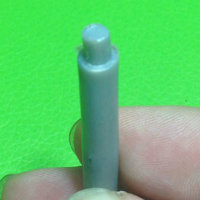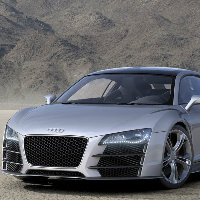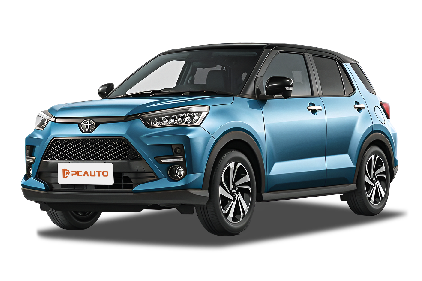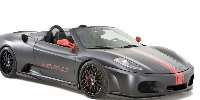Q
Is the Toyota Raize a 7 seater?
The Toyota Raize is classified as a compact SUV and is currently available only in a 5-seat version in the Malaysian market, with no 7-seat configuration. Therefore, it may not be suitable for families that require additional seating capacity.
Favored by young buyers and small households, the Raize stands out for its compact dimensions, fuel efficiency, and well-equipped features. It is powered by either a 1.0-liter turbocharged engine or a 1.2-liter naturally aspirated engine, making it well suited for daily urban commuting.
For those who need a 7-seat vehicle, alternative options such as the Toyota Rush or Toyota Innova may be more appropriate, as they offer more spacious interiors and additional seating. In Malaysia, 7-seater models are generally preferred by larger families. However, it is important to keep in mind that these vehicles typically have larger dimensions and higher fuel consumption. Buyers should carefully consider their space requirements and practicality before making a decision.
Special Disclaimer: This content is published by users and does not represent the views or position of PCauto.
Related Q&A
Q
Are all Toyota Raize turbocharged?
Not all Toyota Raize models are turbocharged. The Toyota Raize comes in different powertrain versions. Among them, the 1.0L Turbo CVT model is equipped with a turbocharged engine. The intake type is Turbo, and the engine has a maximum horsepower of 98PS. However, there are also 1.2L models, including the 1.2L E CVT, 1.2L E MT, and 1.2L G CVT. These models have a displacement of 1198mL and are powered by naturally aspirated engines with a maximum horsepower of 88PS.
A turbocharged engine can provide greater power output with the same displacement, enhancing the vehicle's acceleration performance. On the other hand, a naturally aspirated engine features a simple structure, good stability, and low cost. It has a linear power output and can also meet the needs in daily driving.
Q
Is Toyota Raize keyless?
Yes, some models of the Toyota Raize in the Malaysian market are equipped with the Keyless Entry system. It specifically depends on the selected configuration level. Higher - spec versions usually come with this convenient feature, allowing car owners to unlock the doors or start the engine via the buttons on the door handles without taking out the keys. This compact SUV is also fitted with the Push Start function. When used in conjunction with the Keyless system, it can significantly enhance the daily convenience of using the vehicle.
For Malaysian consumers, such configurations are particularly useful in hot weather or when their hands are full. At the same time, the Raize maintains the Toyota models' consistent durability and low - fuel - consumption characteristics. Its 1.0L turbocharged engine is suitable for local road conditions. It should be noted that there may be configuration differences among different model years. It is recommended to confirm the latest specifications with authorized dealers before purchasing a car.
Similar technologies are also offered by competing models in the same class, such as the Honda HR - V and the Daihatsu Rocky. However, Toyota has an edge in terms of local after - sales network coverage and vehicle resale value. If your budget allows, choosing the version with the keyless system can provide a more modern driving experience, especially for urban users who often need to commute for short distances.
Q
Is the Toyota Raize a luxury car?
The Toyota Raize isn't a luxury car. It's positioned as a compact SUV, targeting the economical, practical, and youth - oriented market. It's suitable for Malaysian consumers with limited budgets but a preference for fashionable designs. The Raize is equipped with a 1.0 - liter turbocharged or a 1.2 - liter naturally aspirated engine, emphasizing fuel economy and urban driving flexibility. In terms of configuration, it offers basic technologies like a touch screen and a rear - view camera, but lacks high - end features commonly found in luxury cars, such as leather seats, premium audio systems, or intelligent driving assistance.
In the Malaysian market, its price range is similar to that of the Perodua Ativa, making it an affordable model. Luxury cars usually refer to high - end products from brands like Lexus and Mercedes, which come with more powerful engines, exquisite interiors, and brand premiums. If you want to know about its competitors in the same class, you can refer to the Honda HR - V or the Mazda CX - 3. They offer a more near - luxury experience in some configurations, but their prices are relatively higher. Consumers who choose the Raize value cost - effectiveness and Toyota's reputation for durability more than luxury features.
Q
Does Toyota Raize Equip with Lane Assist?
Yes, the Toyota Raize is equipped with the Lane Assist system on some high-end models. This feature is usually included in the Toyota Safety Sense (TSS) active safety package. It monitors the lane lines through a camera and provides steering wheel correction or warnings when the vehicle drifts out of the lane, helping the driver keep the vehicle centered in the lane. It should be noted that the specific configuration may vary depending on the year and model version. It is recommended that Malaysian consumers confirm with local dealers before purchasing or refer to the official specification sheet.
Lane Assist is part of the ADAS (Advanced Driver - Assistance Systems). This kind of technology has gradually become popular in the Malaysian market in recent years. In addition to Toyota, other brands such as Honda and Mazda also offer similar functions, but the implementation methods may vary slightly. For example, some systems only provide warnings, while others actively intervene in steering. For owners who often drive long-distance, this kind of feature can effectively reduce fatigue, but it should be noted that it is not fully autonomous driving, and the driver still needs to maintain control of the vehicle.
Q
What is the safety rating of the Toyota Raize?
The safety rating of the Toyota Raize performs well in the Southeast Asian market. Its base - model vehicle received a 4 - star rating (out of 5) in the ASEAN NCAP test, mainly thanks to the standard basic safety features such as dual airbags, ABS anti - lock braking system, and vehicle stability control system. If the high - end version adds side airbags and other configurations, it is expected to be upgraded to a 5 - star rating.
For Malaysian consumers, the Raize's active safety features, such as the Pre - Collision System (PCS) and Lane Departure Warning (LDW), are at the mainstream level in the B - SUV segment. However, it should be noted that the test results are based on the ASEAN NCAP standard, which differs from the test items of the European Euro NCAP or the Japanese JNCAP.
Malaysian car owners can consider the differences in safety - configuration versions according to their own needs when making a purchase. For example, users who often drive long - distance are recommended to choose models equipped with adaptive cruise control. At the same time, it is advisable to visit authorized dealers to experience the demonstration of the vehicle's safety functions to have a more comprehensive understanding of the vehicle's protection performance.
Q
Is Toyota Raize a Hybrid Model?
Currently, all versions of the Toyota Raize available in the Malaysian market are pure fuel-powered models, and no Hybrid version has been launched. This vehicle is equipped with a 1.0L turbocharged engine or a 1.2L naturally aspirated engine, targeting the economical and practical small SUV market. For Malaysian consumers who are interested in hybrid technology, Toyota also offers other popular hybrid models in the local market, such as the Corolla Cross Hybrid or the Yaris Cross Hybrid. These models adopt Toyota's mature THS II hybrid system, which can significantly improve fuel efficiency and reduce emissions. In recent years, the Malaysian government has been encouraging the popularization of hybrid and electric vehicles through policies like tax exemptions. Therefore, if a hybrid version of the Raize is launched in the future, it may attract more local users who care about environmental protection and fuel consumption. It should be noted that although hybrid technology can save fuel, the purchase cost is usually higher than that of the fuel-powered version. It is recommended that consumers make a choice based on their actual budget and vehicle-using needs. Meanwhile, they can also pay attention to the actual test reports of hybrid technology by Malaysian automotive media to get more comprehensive reference information.
Q
What is the difference between Toyota Ativa and Raize?
The Toyota Ativa and Raize are essentially the same model with different names in different markets. The Ativa is the exclusive name for Toyota in the Malaysian market, while the Raize is the common name in the international market. Both are built on the DNGA platform and share core technologies and designs. In the Malaysian market, the Ativa has undergone some adaptation adjustments to meet local needs. For example, the suspension is tuned to better suit tropical road conditions, and it may offer configuration options that match the preferences of Malaysian consumers, such as ventilated seats or extra storage space.
In terms of power, both are equipped with a 1.0 - liter turbocharged three - cylinder engine paired with a CVT transmission. However, the ECU tuning of the Ativa may take into account the fuel quality and climate conditions in Malaysia. In terms of appearance, the Ativa continues the compact SUV design of the Raize, but there may be slight differences in the front grille or wheel styles to enhance local recognition.
It's worth noting that this "twin - model" strategy is quite common in the automotive industry, aiming to improve market acceptance through localization optimization. For example, the Proton X50 and Geely Binyue also have a similar relationship. For Malaysian consumers, choosing the Ativa means enjoying comprehensive after - sales support from Toyota's national dealer network. On the other hand, parallel - imported Raizes may face differences in warranty and parts supply. It is recommended to carefully compare the configuration lists and after - sales service terms before purchasing a car.
Q
Will Toyota Raize be Introduced in Malaysia?
Currently, it hasn't been officially confirmed whether Toyota Raize will be introduced into the Malaysian market. However, considering its popularity in other Southeast Asian countries and Toyota's product layout in Malaysia, there's a possibility of its introduction in the future. As a compact SUV targeting the young market, Raize has performed well in markets like Indonesia and Thailand, thanks to its stylish appearance, fuel efficiency, and Toyota's reputation for reliability. If it enters the Malaysian market, it may compete with models such as Honda HR-V and Proton X50. The demand for compact SUVs among Malaysian consumers has been continuously increasing. Coupled with the advantage of local assembly by Toyota UMW, Raize will be more price - competitive if it's locally produced. It should be noted that the Malaysian market has a greater preference for hybrid vehicles. If Raize can offer a hybrid version, it will better align with the local trend. It is recommended to follow the official website of Toyota Malaysia or local auto show information, as new vehicle introductions are usually officially announced through these channels. For consumers with a limited budget who still want Toyota's quality, they can first look into the currently available Toyota Rush or second - hand C - HR models as transitional options.
Q
Is Toyota Raize automatic?
Yes, the Toyota Raize available in the Malaysian market comes with an automatic transmission. Specifically, it is equipped with a D-CVT continuously variable transmission. This type of transmission combines the smoothness of a traditional CVT with the driving feel of simulated gear shifts. It is suitable for city commuting and boasts excellent fuel economy. As a compact SUV under the Toyota brand, the Raize is targeted at the younger demographic. The combination of its 1.0-liter turbocharged engine and automatic transmission strikes a good balance between power and fuel consumption, making it a great fit for the stop-and-go traffic conditions in Malaysia.
It's worth noting that automatic transmissions are quite popular in the Malaysian market because they are easy to operate and well - suited for congested roads. Moreover, the Raize's D - CVT also offers a sport mode, which can enhance the acceleration response. When considering models in the same class, the Honda HR - V and Nissan Kicks are also common choices with automatic transmissions. However, the Toyota Raize has a certain edge in terms of cost - effectiveness, thanks to its more affordable price and warranty policy.
It is recommended that you take a test drive at an authorized dealer before purchasing a car to see if the transmission tuning meets your personal driving habits.
Q
How many litres does the Toyota Raize's fuel tank hold?
The fuel tank capacity of the Toyota Raize is 36 liters. This small SUV has gained popularity in the Malaysian market for its economic practicality and stylish design. Its fuel tank design takes into account the needs of daily commuting and short-distance trips. Paired with a 1.0-liter turbocharged or a 1.2-liter naturally aspirated engine, it can offer a combined fuel consumption of about 15 to 18 kilometers per liter, and the full-tank range can reach around 500 to 600 kilometers.
For Malaysian users, it's necessary to pay attention to the choice of fuel. It is recommended to use RON95 gasoline to balance economy and engine performance. At the same time, regularly checking the tightness of the fuel tank cap can prevent evaporation losses. If you're going on a long-distance drive, you can flexibly plan your stops at gas stations based on its minimum turning radius of 7.4 meters.
In the same class, models like the Honda HR-V or the Proton X50 have a fuel tank capacity of about 40 to 45 liters. However, thanks to its lighter vehicle weight and efficient power tuning, the Raize still remains competitive in terms of fuel economy. Owners can further optimize the actual fuel consumption through reasonable driving habits.
Popular Cars
Model Year
Car Compare
Car Photo
Latest Q&A
Q
What engine is in the 2018 Volvo XC40?
The 2018 Volvo XC40 offered two gasoline engine options depending on the market: an entry-level 1.5-liter turbocharged three-cylinder T3 (156 hp) and a more powerful 2.0-liter turbocharged four-cylinder T5 (247 hp). Some markets also got a 2.0-liter turbo-diesel variant, though exact specs varied by region.
Built on Volvo’s then-new CMA modular platform, this compact SUV balanced lightweight construction with a rigid chassis. Its engine tech—featuring direct injection, twin-scroll turbos, and a Start/Stop system—delivered solid performance without sacrificing efficiency. Notably, as Volvo’s first compact SUV, the XC40’s powertrain layout left room for future electrification, like the later plug-in hybrid models developed on the same platform.
For daily driving, the T3 provided enough punch for city commutes, while the T5 catered to drivers wanting quicker acceleration. Both paired smoothly with an 8-speed automatic transmission.
Q
How much is a Volvo XC40 2018?
The 2018 Volvo XC40 is currently priced between RM120k to RM180k in the used car market, depending on factors like condition, mileage, trim level, and whether it's still under factory warranty. As Volvo's first compact SUV, it packs a 2.0L turbocharged engine with T5 and T4 powertrain options, and comes standard with the City Safety system. Its Scandinavian interior design and well-tuned chassis make it stand out in its class.
Worth noting—the XC40 won the 2018 European Car of the Year award, thanks to its top-notch safety and practicality. If you're considering one, I'd recommend looking for a certified pre-owned (CPO) unit—they go through rigorous inspections and often include extended warranty coverage. Also, check the service history thoroughly, especially for transmission fluid and timing belt replacements, as these can significantly impact long-term costs.
While parts availability is better than some niche brands, maintenance will still run slightly higher than Japanese rivals. But hey, you're getting that solid Volvo build and safety tech, so it's a fair trade-off for the right buyer.
Q
What engine is in the 2023 Q3?
The 2023 Audi Q3 offers multiple powertrain options tailored to different markets. The most common choice is the 2.0-liter turbocharged four-cylinder engine, available in two states of tune: a base version delivering 184 horsepower and a higher-output variant pushing 228 hp. Both pair with a 7-speed dual-clutch transmission, while select models get Audi’s quattro all-wheel drive for balanced daily driving refinement and sporty character.
This engine benefits from Audi’s advanced direct fuel injection and variable valve timing, boosting performance without sacrificing efficiency. For those craving more punch, the SQ3 steps up with a specially tuned 2.0T churning out 310 hp, rocketing from 0-100 km/h in just 4.8 seconds.
Notably, its modular design simplifies maintenance, and Audi’s proven turbo tech ensures solid reliability. Eco-conscious buyers can opt for a mild-hybrid setup with a 48V system that trims fuel consumption—a competitive edge in this segment.
Q
Is a 2023 Audi Q3 a good car?
The 2023 Audi Q3 is a well-rounded luxury compact SUV that strikes a great balance between brand prestige and everyday usability. Under the hood, you'll find either a peppy 1.4T or more powerful 2.0T turbocharged engine, both paired with Audi's smooth-shifting 7-speed dual-clutch transmission. It delivers decent fuel economy for daily commutes while still offering confident highway overtaking power.
Inside, the Q3 features Audi's signature Virtual Cockpit with a standard 10.25-inch digital instrument cluster and an 8.8-inch infotainment touchscreen (upgradable to 10.1 inches in higher trims). The MMI system supports Apple CarPlay and Android Auto, keeping the tech experience ahead of many rivals. Practical touches include sliding/reclining rear seats and a versatile cargo area that expands to 1,525 liters—perfect for family trips.
Safety is solid, with standard autonomous emergency braking, lane-keeping assist, and seven airbags, earning it a Euro NCAP five-star rating. Just note that some markets might miss features like panoramic sunroofs or adaptive cruise control, so check local specs.
While the BMW X1 offers more rear legroom and the Volvo XC40 shines in safety tech, the Q3 holds its own with sharper interior finishes, strong brand appeal, and that typical German driving feel. It's particularly appealing for young families or drivers who want a premium badge without sacrificing everyday practicality.
Q
How much is a 2023 Q3?
The locally assembled 2023 Audi Q3 is priced between approximately RM250k to RM300k depending on specifications, with possible variations due to optional extras or ongoing promotions. This compact SUV offers two powertrain options - a 1.4T and 2.0T engine, featuring standard tech like Virtual Cockpit and a 10.1-inch infotainment screen, while higher trims come with quattro all-wheel drive.
Audi Malaysia is currently offering low-interest financing for selected models, so we'd recommend checking with authorized dealers for the latest quotes and test drive arrangements. Its main rivals - the BMW X1 and Mercedes-Benz GLA - have similar starting prices, though the Q3 tends to appeal more to young families with its sportier styling and versatile rear seating.
Just a heads-up: maintenance costs for premium brands typically run about 30% higher than mainstream models - a basic service (including oil change) averages RM800 to RM1,200. It's worth factoring in long-term ownership expenses before making your decision.
View MoreRelated News

Why is the Toyota Sienna so popular with so many people?
RobertDec 1, 2025

Toyota unveils the new Corolla at the Auto Guangzhou in China. What changes will the future Corolla have?
AshleyNov 25, 2025

Why is the facelifted GR Yaris considered the finished product?
AshleyNov 21, 2025

Toyota is developing two new Land Cruiser models, will Land Cruiser become an independent brand in the future?
JamesNov 20, 2025

Toyota Supra (A90) will be discontinued next March, and the next generation model may be led by Toyota.
JohnNov 14, 2025
View More















Pros
Cons